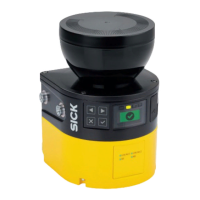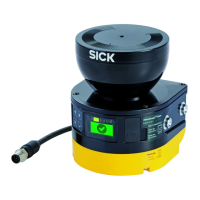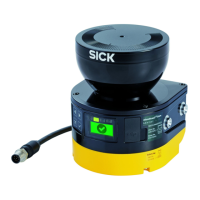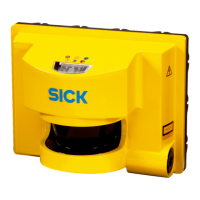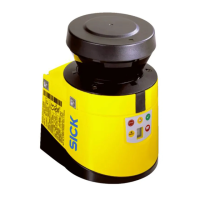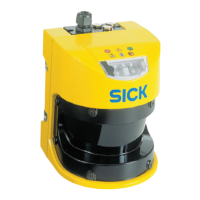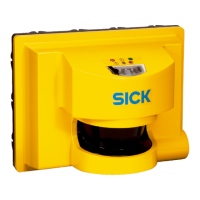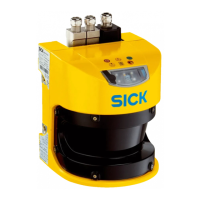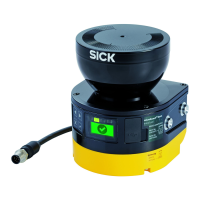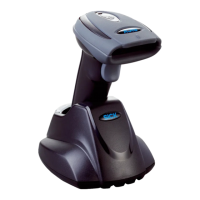4.5.2 Regular thorough check
Overview
T
he purpose of regular tests is to detect defects due to changes or external influences
(e.g. damage or manipulation) and to ensure that the protective measure provides the
necessary protection.
Important information
WARNING
H
azard due to lack of effectiveness of the protective device
Persons and parts of the body to be protected may not be recognized in case of
non-observance.
b
Carry out tests at least once a year.
b
Assign qualified safety personnel to carry out the tests or persons specifically
authorized for this purpose.
b
Document tests in a traceable manner.
Minimum requirements for the regular thorough check
T
he following thorough checks must be carried out at least once a year:
•
"Thorough check of the principal function of the protective device", page 34
•
Test of the detection capability (resolution), see "Thorough check of the area to be
protected", page 35
Recommendations for further thorough checks
In man
y cases, depending on the application conditions, the risk assessment of the
machine determines that further thorough checks are required or that some thorough
checks must take place more frequently.
In many cases, it makes sense to carry out the following thorough checks together
with the regular thorough check:
•
"Visual check of the machine and the protective device", page 36
•
Test of the relevant points on the checklist, see "Checklist for initial commissioning
and commissioning", page 88
In many cases, it makes sense to carry out the following thorough checks daily:
•
"Visual check of the machine and the protective device", page 36
•
"Thorough check of the principal function of the protective device", page 34
Complementary information
If a t
horough check discovers a fault, the machine must be shut down immediately. In
this case, the mounting and electrical installation of the safe multibeam scanner must
be checked by appropriately qualified safety personnel.
4.5.3 Notes on the tests
Thorough check of the principal function of the protective device
R
ecommended approach:
b
Observe OSSD-LED and STATE LED.
°
If the OSSD-LED does not light up permanently green or red, there is an error.
°
If the display behavior of the STATE LED does not meet the specification (see
"LEDs", page 62), there is an error.
4 P
ROJECT PLANNING
34
O P E R A T I N G I N S T R U C T I O N S | scanGrid2 I/O 8025936/2021-01-08 | SICK
Subject to change without notice
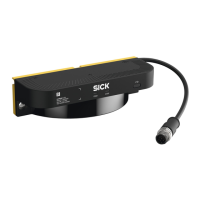
